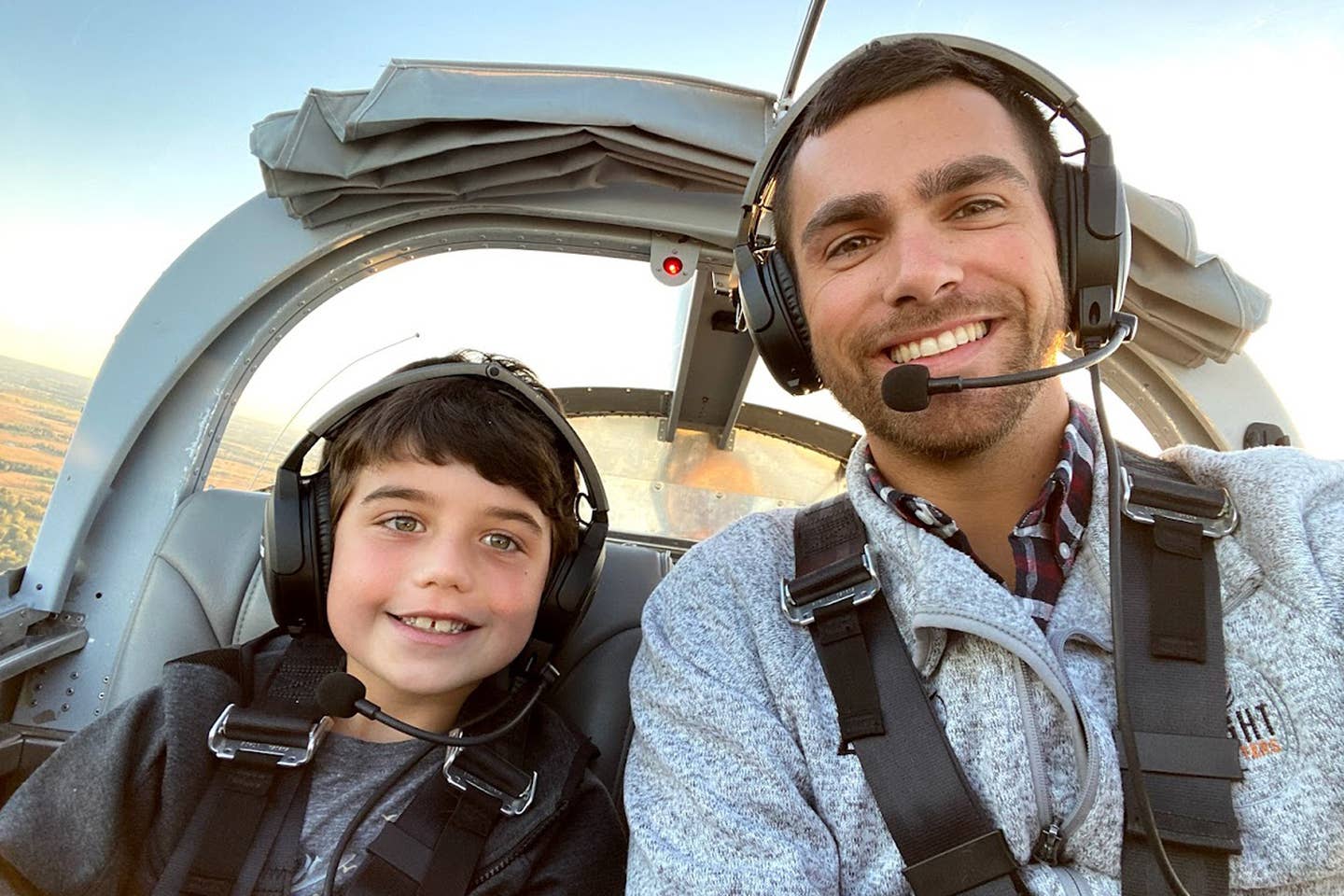
EAA Young Eagles Program Director David Leiting, Jr. flies a Young Eagle in an RV-12iS. [Courtesy: EAA]
If there is one constant with nearly all general aviation pilots, it’s that we love taking kids up for their first airplane ride. We tell them about our airplane, let them touch the controls, get them comfortable in the passenger seat, and then watch with elation when their smile grows bigger as the houses get smaller.
It is this very concept that has made the Experimental Aircraft Association’s (EAA) Young Eagles program so successful. Launched in 1992, volunteer pilots in the Young Eagles program have been giving youth ages 8 to 17 their first free ride in an airplane at EAA chapter events across the country. As of March 17, there had been 2,245,710 Young Eagles flown, and for Greg Bednark, a volunteer Young Eagles pilot in Saint Cloud, Minnesota, making those flights in his Flight Design CT, Rans S7, or Carbon Cub SS light sport airplanes has been a very gratifying endeavor.
A Safe, Economical, and Fun Platform
“Every time my wheels leave the ground, it takes all of the day’s pressures and worries away,” Bednark said. “I see the same excitement in the Young Eagles I’ve flown. I love their smiles as they look at Earth from a bird’s-eye view. Every time I give a Young Eagle ride, I’m hoping to open another young individual’s eyes to a world that is often unknown to them.”
Bednark’s LSAs have provided him with great economy when flying Young Eagles plus additional benefits.
“The CT and Rans both have 100-horsepower Rotax engines, and can burn as little as two gallons per hour just sightseeing, and up to six gallons per hour in cruise. The Carbon Cub SS has a Titan 340 engine that can use as little as three gallons per hour,” he said.
The seating arrangement found in many LSAs makes one of the best platforms for giving Young Eagle rides, Bednark explains.
“The side-by-side configuration makes the flight personal because pilot and passenger are sitting alongside each other where the Young Eagle can more closely monitor their experience. It does seem like they are happier because they are up in the cockpit and can feel the inputs instantly when they take the stick. I dislike tandem seating because it’s not as easy to interact with the Young Eagle when they are in the back seat,” he said.
Bednark pointed out one particular Young Eagle that had his aviation fire lit by his first airplane ride at an EAA event.
“Tyler was just 16 years old and came to one of our events to volunteer. I gave him his first Young Eagles ride after the event in one of my LSAs. He joined our chapter, was accepted for the Ray Aviation Scholarship, and finished his private pilot license in three months. He became our chapter’s youngest president at 17 years old and is currently attending North Dakota State University working on his aviation degree. It was a privilege to give up the reins to the younger generation.”
Flying, Up Close and Personal
Along with the obvious cost savings of burning less fuel when flying Young Eagles in an LSA, offering this introduction to flight in a two-place airplane makes perfect sense, according to EAA.
“Light sport aircraft make great vehicles for providing Young Eagles flights,” said David Leiting Jr., EAA’s Young Eagles program manager. “Not only are they economical to operate, but by nature, they provide the best flight experience. Being a two-seat aircraft assures the youth a front-row view of the entire flight’s mechanics, versus being seated in the rear of a four-place aircraft where you can’t see the pilot work the flight controls, radios, etc. Additionally, the view from most LSAs is improved over a conventional four-place aircraft, especially for those youth who are a bit smaller. For all of these reasons, many of my 50 Young Eagles flights have been given in an LSA; either a Zenith 750 or RV-12iS.”
The Possibilities Are Endless
While EAA does not have specific data on how many of these Young Eagle flights have sparked a love of aviation that ultimately resulted in that young passenger going on to earn their pilot’s license, EAA indicates it is a safe bet to assume there have been many aviation careers launched because of this program.
“We know that thousands of today’s pilots under age 40 received one of their first engagements with aviation through Young Eagles,” said Dick Knapinski, EAA’s director of communications. “That includes those flying for airlines, in the military, and in every college aviation program in America.”
When a pilot pushes the throttle of an LSA forward and they watch as that Young Eagle next to them looks down for the very first time from a GA airplane, the pilot always hopes a spark has been lit. If that spark ends up being a fire that produces a lifelong love of aviation, that pilot and their LSA will have given a gift to a young boy or girl that only GA pilots can give.
If you want to see how good it feels to watch a kid’s face light up as your gear leaves the runway, go here and find out more on becoming a Young Eagles volunteer pilot.

Sign-up for newsletters & special offers!
Get the latest FLYING stories & special offers delivered directly to your inbox






